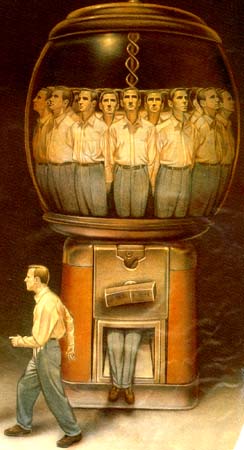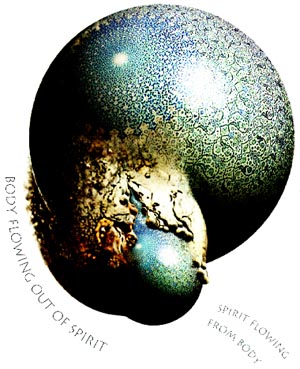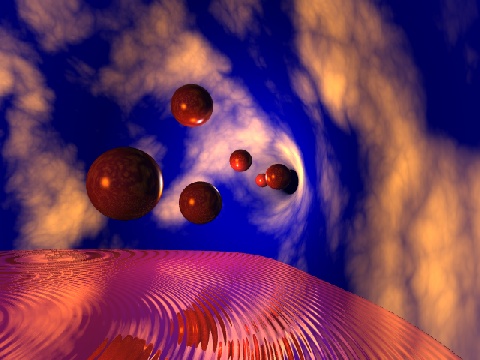 Dangerous Discoveries
Dangerous Discoveries 
The History of Science: Dangerous Discoveries
Dangerous Discoveries 
Professor Julia Keefer, Ph.D. julia.keefer@nyu.edu , 212-734-1083
Note that while this course will discuss phenomena and procedures, it is essentially a history and theory class, devoid of mathematical computations or lab experiments, with a challenging, extensive reading list that should expand your scientific vocabulary while giving you a deeper understanding of the connections between scientific history and the humanities.
Objectives
To awaken a sense of curiosity, wonder, and rigorous investigation into the nature of life and scientific discovery
To give non-scientists and potential science majors a cultural, philosophical, and historical understanding of scientific method, disciplines, discoveries, and their affects on health and disease in humans
To show the relationships between physics, chemistry, biology, environmental science, and the humanities
To develop skills of oral communication with mock trials, role-playing scientists who made significant discoveries, and the social forces that banned, censored, or ex-communicated them
To learn about the form and function of certain phenomena and to exercise imagination by personifying inert elements such as quarks, electrons, rocks, etc through creative writing and artistic representation
To improve writing style, scientific vocabulary, and research techniques
Requirements
Weekly attendance and participation
A 2-3 page paper on your feelings about Language and the Body
A 5-10 page paper on your chosen scientist's biography and great discovery
A 5-10 page paper on your chosen society's opposition to this discovery, analyzing their cultural, ethical, and religious motives
A 5-10 page paper of creative writing—prose, poetry, drama, or multi-genre—personifying an element of nature such as electrons, quarks, rocks, trees etc.
Oral presentations of papers
Mock trials defending and prosecuting your scientist's dangerous discovery
Reading List
Aristotle's Physic
Physics for Non-Physicists. (2000) The Teaching Company.
Greene, Brian. The Elegant Universe. (1999). New York : Vintage.
Hazen, Robert M. The Joy of Science, (2001). The Teaching Company.
Keefer, Julia. Part III: The Bipolar Battle between QCD and EWF in How to Survive as an Adjunct Professor by Wrestling . (2006), Lincoln and Shanghai : iUniverse.
Kuriyama, Shigehisa. The Expressiveness of the Body: and the Divergence of Greek and Chinese Medicine, (2002). New York : Zone Books.
Lightman, Alan. Einstein's Dreams. (1994) New York : Warner Books.
Raymo, Chet and Maureen. Written in Stone . (2001) New York : Black Dome.
Ridley, Matt. Genome. (2000). New York : Harper Perennial.
Rotberg, Robert I. Health and Disease in Human History, editor (2002). Cambridge , Mass:The MIT Press.
Rothman, Marcus, and Kiceluk, editors. Medicine and Western Civilization . (1995). N.J.: Rutgers University Press.
Salzberg, Hugh W. From Caveman to Chemist: Circumstances and Achievements. (1991). Washington , DC : American Chemical Society.
Breakdown
Week 1: In the beginning, there was Aristotle. The roots of chemistry, biology, and physics. Lecture on the Scientific Method and Celestial and Terrestrial Mechanics of the Ordered Universe. Read sections of Aristotle's Physic. Read p.10-54 in Medicine and Western Civilization
Read p1-21 in From Caveman to Chemist .
Week 2: Difference between Greek and Chinese medicine. Read The Expressiveness of the Body: and the Divergence of Greek and Chinese Medicine. Lecture on Professor Keefer's synthesis of Eastern and Western mindbody therapies.
Week 3: Assignment Due: Free Writing on your feelings about Language and the Body. Lecture on Islamic, Medieval, and Renaissance Science. Read Caveman t o p149. Read p54-89 in Medicine and Western Civilization. Lecture on conflicts between religion and science.
Week 4: Individual Stars in Chemistry, Biology, Physics. Profiles of scientists. Finish reading From Caveman to Chemist. Read Part IV of The Joy of Science.
Week 5: Assignment Due: Biography and Discovery of Your Chosen Scientist. Oral presentations of papers, followed by critique and discussion.
Lecture on The Dynamic Earth: Plate Tectonics, Earthquakes, Volcanoes, Rock Cycles, Life's Molecular Building Blocks. Lecture on how Professor Keefer is personifying rocks and plate tectonics in her novel Huguenot Street . Listen to CDs on Physics for Non-Physicists. Read Part III of The Joy of Science. Optional read Written in Stone.
Week 6: Microcosm to Macrocosm. Particle Physics to Outer Space. Lecture on how Professor Keefer personified quarks and electrons in Part III of her trilogy, The Bipolar Battle between the Quantum Chromodynamic Force and the Electroweak Force. Optional read The Elegant Universe and Einstein's Dreams.
Week 7: Assignment Due: Creative Writing/Artistic Representation Personifying a Force of Nature. Oral presentations of papers, followed by critique and discussion.
Begin reading Health and Disease in Human History. Read Part V of The Joy of Science.
Week 8: The Good, the Bad, and the Ugly: Genetic Engineering, Cancer, Ozone Holes, Acid Rain, Greenhouse Effect. Finish reading Health and Disease in Human History. Optional read Genome. Choose a specific culture to analyze in terms of a disease or discovery.
Week 9: Comparative Approaches to Global Health. Field trips. Finish reading Medicine and Western Civilization.
Week 10: Assignment Due: Analytical Paper on Chosen Culture's Reaction to Disease and/or Scientific Discovery. Oral presentations of papers, followed by critique and discussion.
Week 11: Lecture on Technology and Medicine. Finish reading research and optional books.
Week 12: Mock Trials. Each student plays the role of a brilliant scientist on trial for his/her dangerous discovery, as well as the prosecutor of another scientist in another trial, defending the religion or ethics of a particular culture.
Week 13: Mock Trials. 
Week 14: Rewrites of Three Major Papers Due. Excellent papers published online in EvergreenEnergy, International Journal on Global Health.
Timeline
c.3000 B.C. Builders of ancient monuments, such as Stonehenge in England , recognize reproducible events in the heavens.
c.430 B.C. Democritus of Abdera advocates the atomic theory of matter on philosophical grounds.
c.370-330 B.C. Aristotle's teaching and writings on astronomy, physics, and biology exert a great influence on subsequent scholars.
c.50-59. Pliny the Elder catalogs thousands of “facts” in his 37-volume Natural History.
c.145. Ptolemy of Alexandria proposes an Earth-centered model of the solar system that incorporates epicycles.
751. Arab soldiers captured some Chinese papermakers and then set up a paper mill at Samarkand , spreading the technology throughout the west.
980-1037. Avicenna, or ibn-Sina, the greatest physician of medieval Islam, wrote more than one hundred books, one of which was a medical encyclopedia, The Canon of Medicine. His works on geology were translated into Latin in 1200.
870. Abu Mansur used plaster of Paris casts to immobilize fractures.
1543. Copernicus publishes sun-centered model of the solar system, and Vesalius publishes his study of human anatomy.
1572. Tycho Brahe discovers a new star—a supernova in the constellation Cassiopeia.
1581. British instrument maker Robert Norman publishes The New Attractive, in which he describes magnetic dip.
1600. English physician William Gilbert publishes De MAgnete.
1600. Johannes Kepler becomes Tycho Brahe's assistant.
1609. Galileo Galilei builds his first telescopes. His first observations were published in The Starry Messenger in 1610.
1619. Kepler publishes Harmony of the World , which introduces his third law of planetary motion.
1632. Galileo publishes Dialogue Concerning Two World Systems, which led to his heresy trial in the following year.
1660. The Royal Society of London , the first scientific society, is founded.
1665. British scientist Robert Hooke publishes Micrographia , in which he describes the cells of plants.
1665-1666. Isaac Newton develops calculus, deduces the laws of motion, derives a mathematical description of gravity, and conducts key experiments in physics.
1677. Anton van Leeuwenhoek uses the microscope to discover single-celled organisms.
1687. Newton 's great work Principia is published.
1743. Benjamin Franklin helps establish the American Philosophical Society— America 's first scientific society.
1747-1752. Franklin 's electrical experiments lead to the invention of the lightning rod and the theory of electricity as a single fluid.
1785. Scottish geologist James Hutton publishes Theory of the Earth , in which he proposes that geological changes occur gradually over immense spans of time.
1796. French mathematician Pierre Simon Laplace proposes the nebular hypothesis of the origin of the solar system.
1797. Benjamin Thompson illustrates the mechanical equivalence of heat.
1799. Alessandro Volta invents the electric battery.
1808-1827. English meteorologist John Dalton presents the atomic theory in A New System of Chemical Philosophy.
1820. Danish physics professor Hans Christian Oersted discovers that electricity can produce magnetic fields.
1828. German chemist Friedrich Wohler synthesizes urea.
1831-1836. British naturalist Charles Darwin serves as the naturalist aboard the HMS BEAGLE.
1859. Darwin publishes On the Origin of the Species.
1869. Russian chemist Dmitri Mendeleev proposes his periodic table of the elements.
1873. James Clerk Maxwell systematizes electromagnetic phenomena and predicts electromagnetic radiation.
1895. German physicist Wilhelm Konrad Roentgen discovers x-rays.
1898. Polish chemist Marie Curie, assisted by her husband Pierre, isolates the first of the radioactive elements.
1899-1904. British physicist Ernest Rutherford makes fundamental discoveries regarding the nature of radioactivity.
1902. American biologist Walter Sutton discovers egg and sperm have matching pairs of chromosomes.
1905. Albert Einstein publishes three fundamental discoveries: the atomic origin of Brownian motion, the quantum nature of radiative energy, and the theory of special relativity.
1911. Dutch physicist heike kamerlingh-Onnes discoveres superconductivity in a sample of mercury at 4 degrees Kelvin.
1924. American astronomer Edwin Hubble discovers that galaxies are immense collections of billions of stars.
1932. Particle physicist Carl Anderson discovers antimatter.
1945. American scientists develop the atomic bomb.
1952. American biochemist James Watson and British crystallographer Francis Crick solves the double helix structure of DNA.
1953. Chemists Stanley Miller and Harold Urey synthesize amino acids in a chemical experiment designed to mimic the early Earth's atmosphere and ocean.
1959. Cornell physicists Giuseppe Cocconi and Philip Morrison propose a search for extraterrestrial intelligence.
1964. Molecular biologists crack the genetic code of DNA and RNA.
1965. American oceanographer Drummond Matthews and British geophysicist Frederick Vine report on strips of magnetically-aligned rock on either side of mid-ocean ridges.
1969. American astronauts land on the Moon and return samples from the lunar surface.
1972. American paleontologists Stephen Jay Gould and Niles Eldridge propose the theory of evolution by punctuated equilibrium.
1977. American oceanographer Jack Corliss discovers ecosystems at volcanic vents a mile or more deep on the ocean floor while diving in the submersible Alvin .
1979. Abdus Salam and Steven Weinberg win the Nobel Prize in Physics for their work on particle physics.
1980s. NASA's Voyager 1 and 2 spacecraft visit the outer planets of the solar system.
1985. A region over the Antarctic with seasonally reduced ozone, now called the ozone hole, is discovered by British scientists.
1986. The first of a new class of high-temperature superconductors with ionic bonds is discovered by IBM scientists.
1990. NASA's Hubble Space Telescope is launched.
1996. British biologist Ian Wilmut clones a sheep named Dolly from an adult cell.
2000. Human genome mapped.
Nobel Prize Winners in Physics
2000 – Herbert Kroemer
2001 – Carl E. Wieman, Eric A. Cornell, Wolfgang Ketterle
2002 – Raymond Davis Jr., Riccardo Giacconi
2003 – Anthony J. Leggett
2004 – David J. Gross, H. David Politzer, Frank Wilczek
2005 – Roy J. Glauber, Theodor W. Hänsch
2006 – George F. Smoot
Nobel Prize Winners in Chemistry
1999 – Ahmed H. Zewail
2000 – Alan J. Heeger, Alan MacDiarmid
2001 – K. Barry Sharpless
2002 – John B. Fenn
2003 – Peter Agre, Roderick MacKinnon
2005 – Robert H. Grubbs, Richard R. Schrock
Nobel Prize Winners in Medicine
2000 – Paul Greengard, Eric R. Kandel